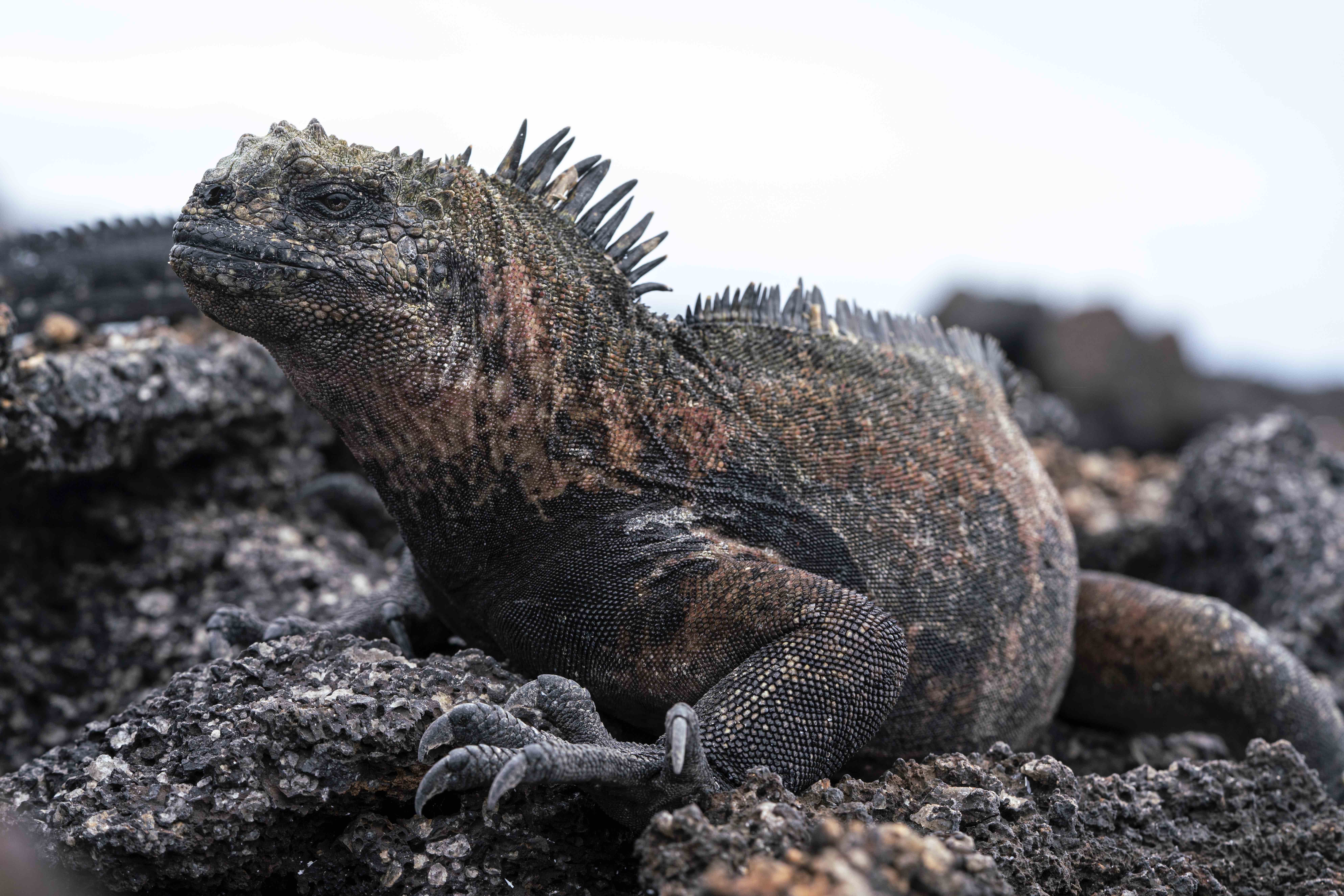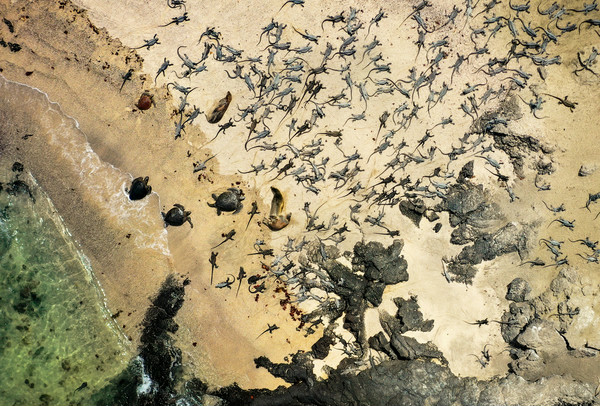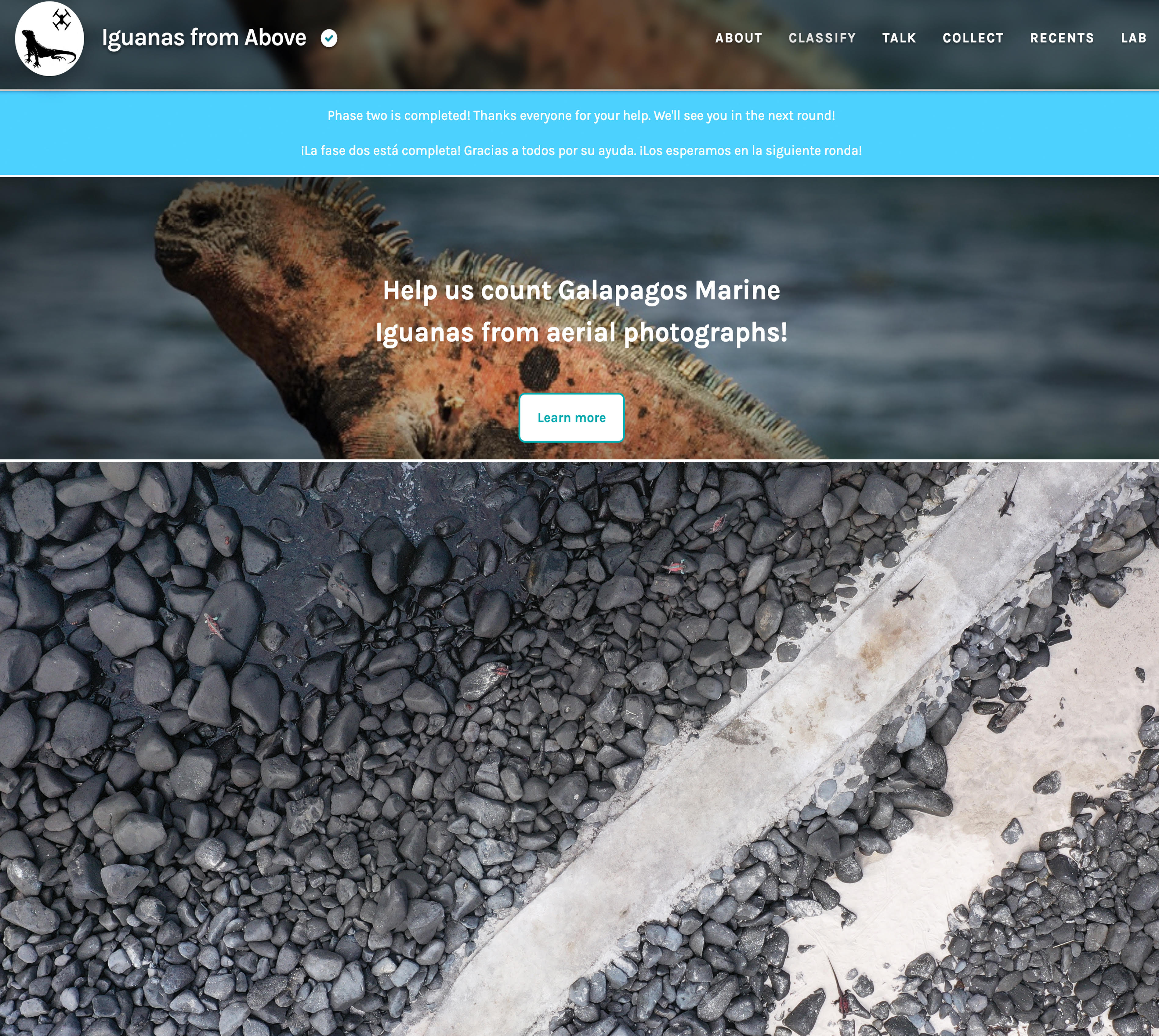
Do you know the fictional Japanese monster Godzilla? We present to you its miniature version — the very real marine iguana.
Marine iguanas are a quirky, charismatic species of reptile living in the tropical paradise of the Galápagos Islands. People often refer to them as mini-Godzillas or marine dragons, but they are definitely not monstrous. In fact, marine iguanas are the only truly marine lizard in the world. They have developed amazing adaptations to feed on algae in the sea, like a propeller tail for swimming, salt-expelling glands on their noses and large claws for grasping in strong currents. The species is endemic to the Galápagos, which means they cannot be found anywhere else.
The marine iguana is unique, but it’s also listed as vulnerable (even critically endangered, on some islands). Threats like invasive species (feral dogs, cats and goats), pollution (oil spills and garbage accumulation), climate change (affecting the availability of food resources) and tourism and urbanization are reducing marine iguanas’ populations.
With their distinctive appearance, remote location and marine lifestyle, marine iguanas have inspired researchers for decades. But there’s still much we don’t know, like how many marine iguanas live on the Galápagos and exactly where. Much of the uncertainty is due simply to the forbidding nature of the marine iguanas’ chosen habitat.

Though the islands look like a tropical paradise, sharp and slippery terrain often makes fieldwork difficult. Interestingly, terrains difficult for people are quite popular for the iguanas. Many live on inaccessible cliff sides near the ocean. These walls seem to be a good place to warm up or rest in quiet groups, despite the risk they take going in and out of the water to feed — it’s common to see iguanas being washed away by the waves or having a hard time climbing back up. We suspect it may be because really good food is probably around.
Dr. Amy MacLeod, a zoologist studying these fascinating creatures, experienced these difficulties while doing field work for her PhD some years ago and came up with the innovative idea of using drones as an alternative for monitoring all marine iguana populations in a safe, cheap and more efficient way. So far it has worked very well!
Drones and Science
Our team flies drones mainly to collect images of the rocky coastlines where the marine iguanas live. It’s become a standard tool to study wildlife in many places around the world and is especially important for threatened or hard to reach species. Our team is trained to perform safe flights and we use affordable drones designed for entertainment.

The goal of the aerial images is to understand how many marine iguanas are left and where to find them. By working together with local wildlife managers, this information will strengthen protections for the species and the Galápagos archipelago as a whole. We have already completed aerial marine iguana surveys on nine big islands, and we have a lot of data to sort through. To speed up the results we need all the help possible!
Iguanas From Above
For this reason, we launched the citizen science project Iguanas from Above where people around the world help us identify and count Galápagos marine iguanas. Our project runs on the Zooniverse platform and is completely online, which means it can be done from anywhere and at any time.

We provide our citizen scientists with a short and easy-to-read tutorial, a complete field guide for species identification (in English and Spanish) and a chat box for active communication regarding any comments or questions you might have. The response from our citizen scientist volunteers so far has given us a lot of optimism for the project and the future of marine iguanas, as we’ve seen how many people have gotten really engaged with conservation efforts to help protect threatened species. More than 7000 volunteers have already participated with us, and our results so far show that volunteers can identify marine iguanas accurately.
Our project is activated in phases, each of which corresponds to a set of islands. A third phase is available now, including images from the Northern Islands: Genovesa, Pinta and Marchena. In the near future, we plan to continue launching new phases, from new islands, covering a variety of habitats and abundances. These three islands in particular don’t see a lot of tourists, so our volunteers get a unique opportunity to explore a largely untouched area of the Galápagos that many people don’t get to see. Volunteers also have the chance to classify other species and plastic objects.
Get Involved With Iguanas From Above
If you want to help us find Iguanas From Above, go to SciStarter, and follow the directions on the project page. You’ll also need to make a Zooniverse account, if you don’t have one already.
You will find aerial imaging available to classify with three different questions: 1) iguanas present or absent, 2) how many iguanas found with sex and behavior (e.g., adult males on a reproductive group) if possible, and 3) number of other species (e.g., sea lions) and/or objects (e.g., plastic bottles) found. We highly recommend reading the material available for identification first.
If you would like to support us or have any questions, please write to iguanasfromabove@gmail.com or contact Dr. Amy MacLeod (ms.amymacleod@gmail.com), project team leader, or Andrea Varela (andrea.varela@uni-leipzig.de), PhD student. You can also find out more about the project on our website.
We are beginning to test a new method to count marine iguanas in our aerial images using machine learning. In this separate activity, we outline the shape of the iguanas in the images to train machines to identify them in the shortest time. For this, we are using the BIIGLE.de platform and we are also looking for volunteers. If you’re interested in helping with this project, please contact us directly.
Many thanks for reading, your time is very much appreciated!
Andrea and the Iguanas from Above team

